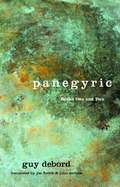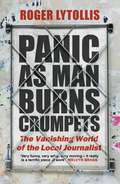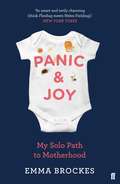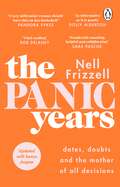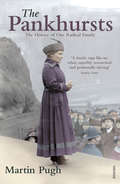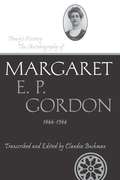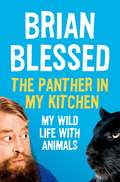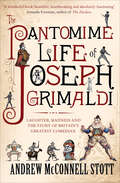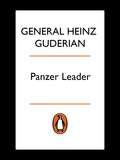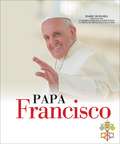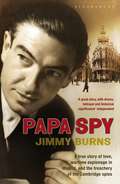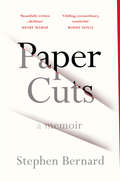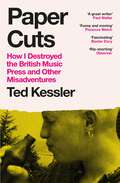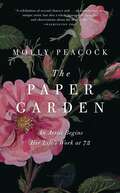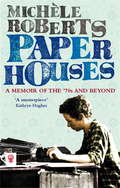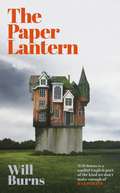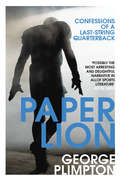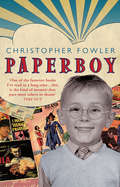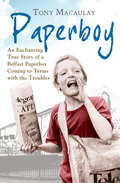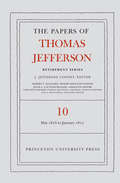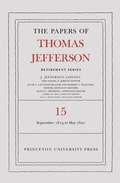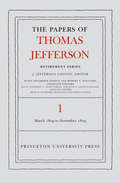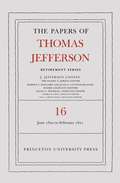- Table View
- List View
Panegyric (PDF)
by Guy Debord James Brook John McHaleGuy Debord’s silver-tongue-in-cheek autobiography mixes precision and pastiche in a whirlwind account of philosophy, exploit, and inebriation. From the stark professions of Volume I to the illustrated sequences of Volume 2, Panegyric confronts us with a figure who strategically, demonically tried to wrest life from the disabling modern 'spectacle.'
Panic as Man Burns Crumpets: The Vanishing World of the Local Journalist
by Roger Lytollis'For those who know about provincial newspapers, this will be a classic and a gem. Those who don't know will envy what they have missed' MELVYN BRAGG'Brisk and entertaining. A very readable love letter to a disappearing world, told with verve and tenderness' STUART MACONIE, author of Pies and Prejudice'Gut-bustingly funny, poignant and packed with astonishing insider information'M. W. CRAVEN, author of the award-winning The Puppet Show'Local publishers . . . need to hold on to thoughtful, dedicated writers such as Roger Lytollis, or his book will be an epitaph to a centuries-old industry'IAN BURRELL, i paperYou dreamed of being a journalist and the dream has come true. You love working for your local paper . . . although not everything is as you imagined.You embarrass yourself with a range of celebrities, from John Hurt to Jordan. Your best story is 'The Man With the Pigeon Tattoo'.A former colleague interviews President Trump. You urinate in the president of the Mothers' Union's garden. Your appearance as a hard-hitting columnist on a BBC talk show does not go well. And being photographed naked is only the second most humiliating thing to happen one infamous afternoon. There are serious stories, such as a mass shooting, a devastating flood, and the search for Madeleine McCann.Meanwhile local papers are dying. Your building is crumbling and your readership is dwindling. Your carefully crafted features are read by fewer people than a story about fancy dress for dogs. Panic as Man Burns Crumpets is the inside story of local newspapers during the past twenty-five years, told in a way that's funny, poignant and revealing.
Panic & Joy: My Solo Path to Motherhood
by Emma BrockesEmma Brockes is thirty-seven, lives alone, and wants children. She is in a relationship (good!) but they aren't doing the parenting together (weird!). Emma needs sperm, a doctor, and not to bankrupt herself. And that's just the beginning - there are a million choices to make when taking the untraditional route to motherhood. Then there's the uninvited opinions, scolding and general hysteria that always accompanies a woman's decision to have (or not to have) children. With generous heart and humour, Panic & Joy examines essential questions about motherhood and the modern family.
The Panic Years: 'Every millennial woman should have this on her bookshelf' Pandora Sykes
by Nell Frizzell'As informative as it is poetic' Dolly Alderton'Smart and perceptive...a must read for 2021' Stylist'Wonderful... touching, helpful and enlightening' Sara PascoeEvery woman will experience the panic years in some way between her mid-twenties and early-forties. This maddening period of transformation and personal crisis is recognisable by the myriad of decisions we make - about partners, holidays, jobs, homes, savings, friendships - all of which are impacted by the urgency of the single decision that comes with a biological deadline, the one decision that is impossible to take back; whether or not to have a baby. But how to stay sane in such a maddening time? How to know who you are and what you might want from life? How to know if you're making the right decisions? Raw, hilarious and beguilingly honest, Nell Frizzell's account of her panic years is both an arm around the shoulder and a campaign to start a conversation. This affects us all - women, men, mothers, children, partners, friends, colleagues - so it's time we started talking about it with a little more candour.'Vital reading. Nell Frizzell is a master.' Rob Delaney, co-writer and co-star of Catastrophe
The Pankhursts: The History of One Radical Family
by Martin PughThe suffragettes outraged Victorian society but their personal lives were just as dramatic as their public actions. In this gripping and incisive account of the Pankhursts, Martin Pugh reveals the full story behind this unique family: Emmeline, the domineering mother; Christabel, the favourite daughter, who became an Adventist and admirer of Mussolini; Sylvia, the 'scarlet woman'; adn Adela, banished to Australia after a bitter rift.The result is a narrative that reads like a novel, and a brilliant insight into the history of a family that changed the face of British society for ever.
Pansy's History: The Autobiography of Margaret E. P. Gordon, 1866-1966 (Life writings of frontier women ; #v.12)
by Margaret E.P. Gordon Claudia L. BushmanMargaret "Pansy" Gordon's life covered a remarkable span of years and territory. She lived one century, and the years took her from England to residences in British Columbia, Salt Lake City, and an Ojibway village on Georgian Bay; back to Utah and then Canada to homes at the shore of Bear Lake, on an Alberta farm, and in a prairie town; and to Los Angeles for the last decades of her life. She had gone to British Columbia as the daughter of an Anglican missionary to the Tsimshian Indians. She lived in Los Angeles as a Mormon missionary assigned to work as a genealogist. Her personal journey through repeated frontier adventures, religious service, and economic challenges is as worth noting as where she went, but it would be far less engaging if she did not write about it so well. Her memory for detail and her felicity in putting it to paper will reward those who delve into her "Family History," as she titled her memoir. Claudia L. Bushman, descendant of Pansy Gordon, author of numerous books, taught American studies at Columbia University for many years and taught Mormon studies at Claremont Graduate University from 2008 to 2011. She has included letters and other documents that complement this memoir.
The Panther In My Kitchen: My Wild Life With Animals
by Brian BlessedBrian Blessed has a lifelong love of animals and over the years has rescued cats and dogs, horses and ponies, and even a very ungrateful fighting cock. All were characters in their own right, such as Jessie, a dog left languishing for a year at the local RSPCA, who ruled the entire household with a rod of iron, when she wasn’t out harassing the local vicar. Then there was Bodger, an abused terrier cross breed, was nursed back to health by Brian and his wife, and Peppone, a stray cat and notorious thief, was responsible for a crime epidemic in the Bagshot area. Most of all there was Misty, a soul mate and the first Jack Russell Brian met who didn’t take an instant dislike to him. Over the years Brian has encountered more exotic animals too, from Kali the black panther who had free run of his kitchen and the gentle boa constrictor Bo Bo who went for walks with him in Richmond Park to the female gorillas who found him incredibly attractive. Written with all of Brian’s ebullience, The Panther in My Kitchen is a laugh out loud, life affirming book about the joy animals bring and why we should care for them.
The Pantomime Life of Joseph Grimaldi: Laughter, Madness and the Story of Britain's Greatest Comedian
by Andrew McConnell ScottThe son of a deranged Italian immigrant, Joseph Grimaldi (1778-1837) was the most celebrated of English clowns. The first to use white-face make-up and wear outrageous coloured clothes, he completely transformed the role of the Clown in the pantomime with a look as iconic as Chaplin's tramp or Tommy Cooper's magician. One of the first celebrity comedians, his friends included Lord Byron and the actor Edmund Kean, and his memoirs were edited by the young Charles Dickens. But underneath the stage paint, Grimaldi struggled with depression and his life was blighted with tragedy. His first wife died in childbirth and his son would go on to drink himself to death. In later life, the extreme physicality of his performances left him disabled and in constant pain. The outward joy and tomfoolery of his performances masked a dark and depressing personal life, and instituted the modern figure of the glum, brooding comedian. Drawing on a wealth of source material, Stott has written the definitive biography of Grimaldi and a highly nuanced portrait of Georgian theatre in London, from the frequent riots at Drury Lane to the spectacular excess of its arch-rival Sadler's Wells; from stage elephants running amok to recreations of Admiral Nelson's sea battles on flooded stages at the height of the Napoleonic Wars. Joseph Grimaldi left an indelible mark on British theatre and the performing arts, but his legacy is one of human struggle, battling demons and giving it his all in the face of adversity.
Panzer Leader: The Classic Account Of Blitzkrieg (Penguin Classic Military History Ser.)
by Heinz GuderianHeinz Guderian - master of the Blitzkrieg and father of modern tank warfare - commanded the German XIX Army Corps as it rampaged across Poland in 1939. Personally leading the devastating attack which traversed the Ardennes Forest and broke through French lines, he was at the forefront of the race to the Channel coast. Only Hitler's personal command to halt prevented Guderian's tanks and troops turning Dunkirk into an Allied bloodbath.Later commanding Panzergruppe 2 in Operation Barbarossa, Guderian's armoured spearhead took Smolensk after fierce fighting and was poised to launch the final assault on Moscow when he was ordered south to Kiev. In the battle that followed, he helped encircle and capture over 600,000 Soviet troops after days of combat in the most terrible conditions.Panzer Leader is a searing firsthand account of the most effective fighting force in modern history by the man who commanded it.
Papa Francisco
by Marie DuhamelDesde el momento en que fue elegido para el papado, el papa Francisco ha captado la atención del mundo con su humildad, carisma y espíritu reformistaEsta biografía ilustrada única del primer Papa jesuita ofrece más de 250 fotografías e incluye 50 documentos de la vida de Francisco que se pueden extraer del libro. Escrita por la reportera de Radio Vaticano, Marie Duhamel, este retrato íntimo incluye la emigración de sus padres desde Italia, su nacimiento como Jorge Mario Bergoglio en 1936, su amor por el fútbol y la ópera cuando era niño, la neumonía que casi le costó la vida cuando era un adulto joven, su llamado al sacerdocio, y su primer encuentro con la pobreza cuando era misionero en Chile que cambió su vida. Duhamel hace una crónica del ascenso de Francisco de sacerdote a obispo, de cardenal al papado, y cómo, a lo largo del camino, impresionó a muchas personas, y alejó a algunas, con su valentía para hacer frente a la autoridad y su dedicación a ayudar a los pobres. Los documentos adjuntos, como su certificado de bautismo, fotografías de su niñez, páginas de un cuaderno escolar, notas manuscritas como Papa, e incluso una tarjeta de seguidor de su querido club de fútbol del San Lorenzo, ilustran más aún su vida y crean un recuerdo duradero de este Papa para el pueblo.---From the moment he was elected into the papacy, Pope Francis has captured the attention of the world with his humility, charisma, and reformist spirit. This one-of-a-kind, illustrated biography of the first Jesuit pope offers more than 250 photographs and 50 documents from Francis's life. Written by Vatican Radio reporter Marie Duhamel, this intimate portrait includes his parents emigration from Italy, his birth as Jorge Mario Bergoglio in 1936, his love of soccer and opera as a child, the pneumonia that nearly cost him his life as a young adult, his calling to the priesthood, and his first encounter with poverty as a missionary in Chile that would change his life. Duhamel chronicles Francis's rise from priest to bishop to cardinal to the papacy and how, along the way, he impressed many people-and alienated some-with his courage to stand up to authority and his dedication to helping the poor. Enclosed documents such as his baptism certificate, photographs from his childhood, pages from a school notebook, handwritten notes as pope, and even a support card for his beloved San Lorenzosoccer club, further illuminate his life and create a lasting keepsake of this pope of the people.
Papa Spy: A True Story of Love, Wartime Espionage in Madrid, and the Treachery of the Cambridge Spies
by Jimmy BurnsIn the 1930s Tom Burns was a rising star of British publishing, whose friends and authors included G. K. Chesterton, Evelyn Waugh, Graham Greene, the artist Eric Gill and the poet David Jones. And among his glittering social circle he had set his heart on the beautiful Ann Bowes-Lyon, cousin of the Queen.When war was declared in 1939, Burns joined the Ministry of Information, effectively the propaganda wing of the secret services. Sent to Madrid as press attaché at the British Embassy, where the Ambassador was the formidable and very Protestant Sir Samuel Hoare, Burns used his faith and his deep love of Spain in the propaganda war against the Nazis, who at the time had pretty much unrestricted access to the Spanish media. Burns' brief was to do all in his power to keep Franco neutral and so protect Gibraltar and access to the western Mediterranean. The strategy was simple, but the tactics were more complicated, especially when Burns found he had begun to make enemies at home, not least among them Kim Philby and Anthony Blunt, head of the MI6's Iberian section. By 1941 he felt far from the real fighting, Ann had pledged herself to another man, and Burns was spending as much time protecting his back as fighting the Nazis. How he overcame these odds, was involved in the Man Who Never Was decoy plot, arranged Leslie Howard's fatal propaganda trip to Portugal and Spain, and finally found true love while loyally serving his country is the story told in this extraordinary book by his son.
Paper Cuts: A Memoir
by Stephen Bernard‘I have a small line of red dots on the back of my left hand, where the needle goes in. I have had hundreds of ketamine injections, more than anyone else, perhaps. The needle goes in, and the truth comes out. Sometimes I am a child again. Sometimes I have the innocence of a child, but I am not innocent. I know too much. I have known too much.’With Paper Cuts, Stephen Bernard boldly tests the bounds of what a memoir can achieve. Living through the trauma of childhood abuse and mental illness, he writes to escape and confront, to accuse and explain. Each morning when he wakes, Stephen Bernard must literally reconstruct his self: every night he writes himself a letter to be read the next day. The fractured, intensely personal narrative of Paper Cuts follows a single day in his life as he navigates a course through the effects of mania, medication and memories. The result is painful, unique and inspiring.
Paper Cuts: How I Destroyed the British Music Press and Other Misadventures
by Ted Kessler'A great writer' Paul Weller'A music journalist of integrity' Billy Childish'There's only one Ted Kessler!' Liam GallagherPAPER CUTS is the inside story of the slow death of the British music press. But it's also a love letter to it, the tale of how music magazines saved one man's life. Ted Kessler left home and school around his seventeenth birthday, determined 'to be someone who listened to music professionally'. That dream appeared forlorn when he was later arrested for theft behind the counter of the record shop he managed during acid house's long hot summer of love. Paper Cuts tells how Kessler found redemption through music and writing and takes us on a journey alongside the stars he interviewed and the work-place dramas he navigated as a senior staffer at NME through the boom-time '90s and on to the monthly Q in 2004, where he worked for sixteen years before it folded with him at its helm as editor in 2020.We travel in time alongside musical heroes Paul Weller, Kevin Rowland, Mark E Smith, and to Cuba twice, first with Shaun Ryder and Bez, then with Manic Street Preachers. We spend long, mad nights out with Oasis and The Strokes, quality time with Jeff Buckley and Florence Welch, and watch Radiohead deliver cold revenge upon Kessler in public. A story about love and death, about what it's like when a music writer shacks up with a conflict of interest, and what happens when your younger brother starts appearing on the cover of the magazines you work for, this is the memoir of "a delinquent doofus" whose life was both rescued and defined by music magazines.
The Paper Garden: An Artist Begins Her Life's Work at 72
by Molly PeacockMary Delany was seventy-two years old when she noticed a petal drop from a geranium. In a flash of inspiration, she picked up her scissors and cut out a paper replica of the petal, inventing the art of collage. It was the summer of 1772, in England. During the next ten years she completed nearly a thousand cut-paper botanicals (which she called mosaicks) so accurate that botanists still refer to them. Poet-biographer Molly Peacock uses close-ups of these brilliant collages in The Paper Garden to track the extraordinary life of Delany, friend of Swift, Handel, Hogarth, and even Queen Charlotte and King George III.How did this remarkable role model for late blooming manage it? After a disastrous teenage marriage to a drunken sixty-one-year-old squire, she took control of her own life, pursuing creative projects, spurning suitors, and gaining friends. At forty-three, she married Jonathan Swift's friend Dr. Patrick Delany, and lived in Ireland in a true expression of midlife love. But after twenty-five years and a terrible lawsuit, her husband died. Sent into a netherland of mourning, Mrs. Delany was rescued by her friend, the fabulously wealthy Duchess of Portland. The Duchess introduced Delany to the botanical adventurers of the day and a bonanza of exotic plants from Captain Cook's voyage, which became the inspiration for her art. Peacock herself first saw Mrs. Delany's work more than twenty years before she wrote The Paper Garden, but "like a book you know is too old for you," she put the thought of the old woman away. She went on to marry and cherish the happiness of her own midlife, in a parallel to Mrs. Delany, and by chance rediscovered the mosaicks decades later. This encounter confronted the poet with her own aging and gave her-and her readers-a blueprint for late-life flexibility, creativity, and change.
Paper Houses: A Memoir of the 70s and Beyond
by Michele RobertsRebellion, revolution, experimental living, feminist communes, street theatre, radical magazines, love affairs - gay and straight - sex, drugs and rock and roll.Michèle Roberts, one of Britain's most talented and highly acclaimed novelists, now considers her own life, in this vibrant, powerful portrait of a time and place: alternative London of the 1970s and beyond. A fledgling writer taking a leap into radical politics, Roberts finds alternative homes, new families and lifelong friendships in the streets and houses of Holloway, Peckham, Regent's Park and Notting Hill Gate. From Spare Rib to publishing her first book, Paper Houses is Roberts' story of finding a space in which to live, love and write - and learning to share it.'Beguiling, enthusiastic, charming and vivid, this is an autobiography to be savoured' Amanda Craig, DAILY TELEGRAPH
The Paper Lantern
by Will Burns'Will Burns is a soulful English poet of the kind we don't make enough of' MAX PORTER'Hugely affecting and timely' LUKE TURNER'A boldly struck chord, one that contains many of the dissonances, but also the harmonies, found in England today' CHRIS POWERIn THE PAPER LANTERN, a single speaker charts and interrogates the shifts in mood and understanding that have defined a surreal, transformative period in both his own history and that of the surrounding area. Set in a shuttered pub - The Paper Lantern - in a village in the very middle of the country adjacent to the Chequers estate, the narrator embarks on a series of walks in the Chiltern Hills, which become the landscape for evocations of a past scarred with trauma and a present lacking compass. From local raves in secret valleys and the history of landmarks such as Halton House, to the fallout of the lockdown period, climate change and capitalism, THE PAPER LANTERN creates a tangible, lived-in, complicated rendering of a place.
Paper Lion: Confessions of a last-string quarterback
by George PlimptonIn the mid-1960s, George Plimpton talked his way into the Detroit Lions’ pre-season training camp and in doing so set the bar for participatory sports journalism. With his characteristic wit, Plimpton recounts his experience of a month practising and living with the team – getting to know the pressures and tensions rookies confront, the hijinks, taking behind the scenes snaps and capturing a host of American football rites and rituals. Plimpton might not have made it as a quarterback, but fifty years after its first publication, Paper Lion remains one of the most insightful and entertaining classics of sports literature.
Paperboy
by Christopher FowlerChristopher Fowler's memoir captures life in suburban London as it has rarely been seen: through the eyes of a lonely boy who spends his days between the library and the cinema, devouring novels, comics, cereal packets - anything that might reveal a story. Caught between an ever-sensible but exhausted mother and a DIY-obsessed father fighting his own demons, Christopher takes refuge in words. His parents try to understand their son's peculiar obsessions, but fast lose patience with him - and each other. The war of nerves escalates to include every member of the Fowler family, and something has to give, but does it mean that a boy must always give up his dreams for the tough lessons of real life? Beautifully written, this rich and astute evocation of a time and a place recalls a childhood at once entertainingly eccentric and endearingly ordinary.
Paperboy: An Enchanting True Story Of A Belfast Paperboy Coming To Terms With The Troubles
by Tony MacaulayIt’s Belfast, 1975. The city lies under the dark cloud of the Troubles, and hatred fills the air like smoke. But Tony Macaulay has just turned twelve and he’s got a new job. He’s going to be a paperboy. And come rain or shine – or bombs and mortar – he will deliver…
The Papers of Thomas Jefferson: 1 May 1816 to 18 January 1817 (Papers of Thomas Jefferson, Retirement Series #10)
by Thomas Jefferson J. LooneyPapers of Thomas Jefferson, Retirement Series
The Papers of Thomas Jefferson: 1 May 1816 to 18 January 1817
by Thomas Jefferson J. Jefferson LooneyThe 558 documents in this volume cover the period from 1 May 1816 to 18 January 1817. During this time, Jefferson expects political upheaval in Great Britain, welcomes the imminent presidential transition from James Madison to James Monroe, and privately suggests substantial amendments to Virginia's constitution. Jefferson occasionally gives legal advice, including an opinion on whether perjury can be committed before a grand jury. He turns down a request to sell Natural Bridge, calculates the latitude of Poplar Forest and Willis's Mountain, receives a large shipment of foreign books, exchanges the last of a series of letters with Pierre Samuel Du Pont de Nemours, and is appointed a visitor of Central College. As before, sojourners flock to Monticello. The Baron de Montlezun and Francis Hall provide informative accounts of Jefferson's home, way of life, and thoughts on many subjects. Jefferson attempts to bring Destutt de Tracy's Treatise on Political Economy into print, offers biographical information for Delaplaine's Repository, and recommends revisions to a forthcoming biography of Patrick Henry. Jefferson and Francis Adrian Van der Kemp trade letters about Jesus's life and teachings, and after the ailing Charles Thomson circulates the mistaken idea that Jefferson has converted to Christianity, correspondents question him about his spiritual beliefs.
The Papers of Thomas Jefferson: 1 September 1819 to 31 May 1820
by Thomas Jefferson J. Jefferson LooneyThe 618 documents in this volume span 1 September 1819 to 31 May 1820. Jefferson suffers from a “colic,” recovery from which requires extensive rest and medication. He spends much time dealing with the immediate effects of the $20,000 addition to his debts resulting from his endorsement of notes for the bankrupt Wilson Cary Nicholas. Jefferson begins to correspond with his carpenter, the enslaved John Hemmings, as Hemmings undertakes maintenance and construction work at Poplar Forest. Jefferson and his allies in the state legislature obtain authorization for a $60,000 loan for the fledgling University of Virginia, the need for which becomes painfully clear when university workmen complain that they have not been paid during seven months of construction work. In the spring of 1820, following congressional discussion leading to the Missouri Compromise, Jefferson writes that the debate, “like a fire bell in the night, awakened and filled me with terror,” and that with regard to slavery, Americans have “the wolf by the ear, and we can neither hold him, nor safely let him go.”
The Papers of Thomas Jefferson, Retirement Series, Volume 1: 4 March 1809 to 15 November 1809
by Thomas Jefferson J. Jefferson LooneyThis volume inaugurates the definitive edition of papers from Thomas Jefferson's retirement. As the volume opens, a new president is installed and Jefferson is anticipating his return to Virginia, where he will pursue a fascinating range of personal and intellectual activities. He prepares for his final departure from Washington by settling accounts and borrowing to pay his creditors. At Monticello he tells of his efforts to restore order at his mismanaged mill complex, breed merino sheep, and otherwise resume full control of his financial and agricultural affairs. Though he is entering retirement, he still has one foot firmly planted in the world of public affairs. He acknowledges a flood of accolades on his retirement and has frequent exchanges with President James Madison. While fielding written requests for money, favors, and advice from a kaleidoscopic array of relatives, acquaintances, strangers, cranks, anonymous writers, and a blackmailer, he maintains a wide and varied correspondence with scientists and scholars on both sides of the Atlantic. The volume's highlights include first-hand accounts of Jefferson's demeanor at his successor's inauguration and one of the most detailed descriptions of life at Monticello by a visitor; Jefferson's recommendations on book purchases to a literary club and a teacher; chemical analyses of tobacco by a French scientist that first isolated nicotine; the earliest descriptions of the death of Meriwether Lewis; one of Jefferson's most eloquent calls for religious tolerance; and his modest assessment of the value of his writings in reply to a printer interested in publishing them.
The Papers of Thomas Jefferson, Retirement Series, Volume 1: 4 March 1809 to 15 November 1809 (PDF) (Papers of Thomas Jefferson, Retirement Series #1)
by Thomas Jefferson J. Jefferson LooneyThis volume inaugurates the definitive edition of papers from Thomas Jefferson's retirement. As the volume opens, a new president is installed and Jefferson is anticipating his return to Virginia, where he will pursue a fascinating range of personal and intellectual activities. He prepares for his final departure from Washington by settling accounts and borrowing to pay his creditors. At Monticello he tells of his efforts to restore order at his mismanaged mill complex, breed merino sheep, and otherwise resume full control of his financial and agricultural affairs. Though he is entering retirement, he still has one foot firmly planted in the world of public affairs. He acknowledges a flood of accolades on his retirement and has frequent exchanges with President James Madison. While fielding written requests for money, favors, and advice from a kaleidoscopic array of relatives, acquaintances, strangers, cranks, anonymous writers, and a blackmailer, he maintains a wide and varied correspondence with scientists and scholars on both sides of the Atlantic. The volume's highlights include first-hand accounts of Jefferson's demeanor at his successor's inauguration and one of the most detailed descriptions of life at Monticello by a visitor; Jefferson's recommendations on book purchases to a literary club and a teacher; chemical analyses of tobacco by a French scientist that first isolated nicotine; the earliest descriptions of the death of Meriwether Lewis; one of Jefferson's most eloquent calls for religious tolerance; and his modest assessment of the value of his writings in reply to a printer interested in publishing them.
The Papers of Thomas Jefferson: 1 June 1820 to 28 February 1821 (Papers of Thomas Jefferson: Retirement Series #16)
by Thomas JeffersonThis volume’s 571 documents cover both Jefferson’s opposition to restrictions on slavery in Missouri and his concession that “the boisterous sea of liberty is never without a wave.” Seeking support for the University of Virginia, he fears that southerners who receive New England educations will return with northern values. Calling it “the Hobby of my old age,” Jefferson envisions an institution dedicated to “the illimitable freedom of the human mind.” He infers approvingly from revolutionary movements in Europe and South America that “the disease of liberty is catching.” Constantine S. Rafinesque addresses three public letters to Jefferson presenting archaeological research on Kentucky’s Alligewi Indians, and Jefferson circulates a Nottoway-language vocabulary. Early in 1821 he cites declining health and advanced age as he turns over the management of his Monticello and Poplar Forest plantations to his grandson Thomas Jefferson Randolph. In discussions with trusted correspondents, Jefferson admires Jesus’s morality while doubting his miracles, discusses the materiality of the soul, and shares his thoughts on Unitarianism. Reflecting on the dwindling number of their old friends, he tells Maria Cosway that he is like “a solitary trunk in a desolate field, from which all it’s former companions have disappeared.”
